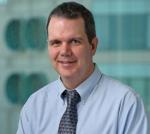Substrate selection in the hypertrophic and failing mouse heart
Date
Hypertrophy and failure of the heart is characterized by profound changes in selection of nutrients for the production of acetyl-CoA. Recent results with hyperpolarized pyruvate have shown that metabolism of carbohydrates can be assayed in a straightforward manner in functioning tissues. Despite these technical advances, more work is needed to properly interpret the findings. A series of experiments have been carried out to compare steady state carbon-13 methods with results obtained with hyperpolarized MR. Results in the normal heart, in a model of hypertrophy, and a model of congestive heart failure will be presented.
731 America/Los_Angeles publicType
Time Duration
Location
Hypertrophy and failure of the heart is characterized by profound changes in selection of nutrients for the production of acetyl-CoA. Recent results with hyperpolarized pyruvate have shown that metabolism of carbohydrates can be assayed in a straightforward manner in functioning tissues. Despite these technical advances, more work is needed to properly interpret the findings. A series of experiments have been carried out to compare steady state carbon-13 methods with results obtained with hyperpolarized MR. Results in the normal heart, in a model of hypertrophy, and a model of congestive heart failure will be presented.
Speakers

Department of Biochemistry and Molecular Biology
Matthew Merritt received his PhD in physical chemistry in the lab of Dr. Jacob Schaefer at Washington University in St. Louis, MO (1996). His dissertation focused on determining 3D structures in condensed solids, including polymers and biopolymers, using solid state NMR distance measurements. He then joined the lab of Dr. Gary Drobny at the University of Washington in Seattle. For his post-doctoral research at UW, he determined structural constraints in DNA using 31P-19F REDOR solid state NMR. In the year 2000, he joined the staff of the Radiological Sciences Department at the University of Texas Southwestern Medical Center in Dallas, Texas. In 2004 he was promoted to research faculty, and in 2008 to tenure track faculty as an Assistant Professor. In 2015 he was promoted to Associate Professor of Radiology at UTSW. In September of 2015 he joined the UF faculty as an Associate Professor of Biochemistry and Molecular Biology.
